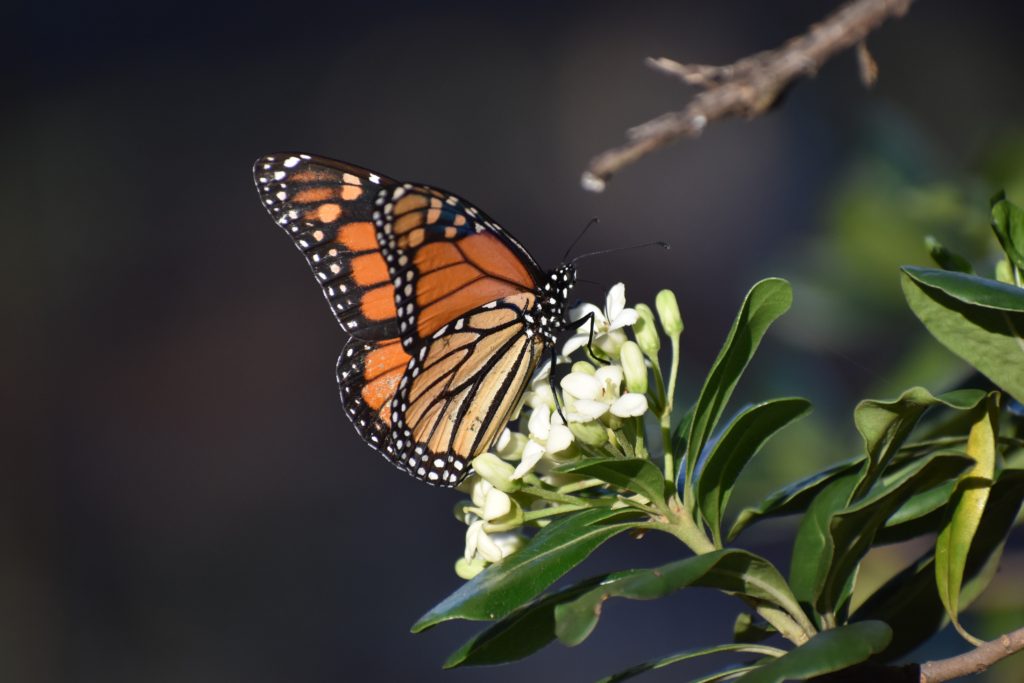Emerging Butterflies in the changing seasons
 The rainy season brings new life to the Crystal Cove backcountry. Southern California experiences a Mediterranean climate, characterized by dry summers and moderately wet winters. To adapt to these conditions, many perennial plants will drop their leaves in the summer to save water, however, once the rainy season arrives, leaves will begin to regrow. This season also sees a surge of annual plants, most of which will not survive for long once the summer sun dries out the landscape. While many of these plants begin to grow in the rainy season, it may not be the rain that directly triggers their growth. While some plants directly respond to precipitation, many others respond to cues in temperature or photoperiod (the amount of light in the day) to emerge from estivation.
The rainy season brings new life to the Crystal Cove backcountry. Southern California experiences a Mediterranean climate, characterized by dry summers and moderately wet winters. To adapt to these conditions, many perennial plants will drop their leaves in the summer to save water, however, once the rainy season arrives, leaves will begin to regrow. This season also sees a surge of annual plants, most of which will not survive for long once the summer sun dries out the landscape. While many of these plants begin to grow in the rainy season, it may not be the rain that directly triggers their growth. While some plants directly respond to precipitation, many others respond to cues in temperature or photoperiod (the amount of light in the day) to emerge from estivation.
These complex responses to seasonal cues are also critical to the myriad butterflies and moths who must correctly time their diapause. Diapause is a period of suspended development that many lepidopterans or butterflies and moths undergo to avoid difficult conditions. If this occurs too early, the plants they need may not be ready. However, if it is too late, they may miss them entirely. To time their activity right, they also respond to environmental cues about both when to begin and end diapause. Temperature and photoperiod are common environmental cues for this process.
The monarch butterfly famously undergoes reproductive diapause as an adult. During this time the reproductive organs are suspended in development and the butterflies group together to form massive clusters. Once the spring comes they quickly become reproductively active and continue their life cycle. The Anise swallowtail undergoes diapause as a pupa, which will not end until the proper conditions are met. The butterfly can remain in this state for up to seven years.
A lot is known about these processes through the science of phenology, which studies the life cycles of plants and animals. One huge unknown in phenology is how it might change in the future. Warmer temperatures and aberrant rainfall patterns will undoubtedly affect both plants and lepidopterans. Will plants begin to bloom sooner, and if so, will butterflies be able to adjust so they have the resources they need once their diapause has ended? These are questions that have yet to be answered.
Crystal Cove Conservancy and citizen scientist volunteers have begun to monitor both the butterflies in the park and the flowering time of plants. Once a month they walk the trails of Moro Canyon and record their butterfly and plant observations. By doing this, we hope to begin to answer some of these questions in Crystal Cove. While we are still early for most butterflies, some Sara Orange tips and Cabbage Whites have been seen at this time of year in coastal Orange County.
If you are interested in participating in our monthly butterfly surveys, please email Chris Halsch at chrish@crystalcove.org.
